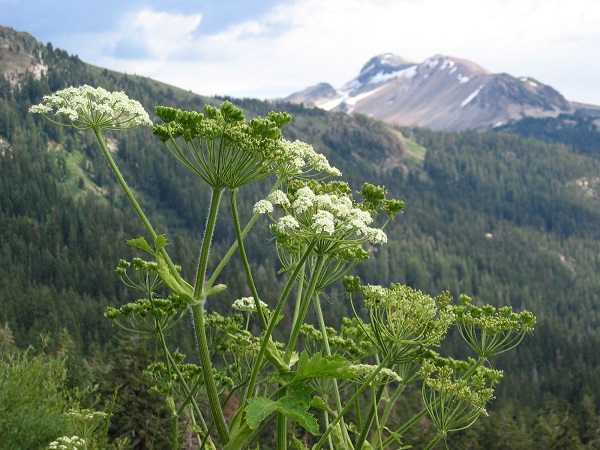| The Sandisfield Times |
|---|
| Cow Parsnip: A Giant Hogweed Imposter |
|
by Tom Christopher Published August 1, 2024. |
 (Photo: Wikipedia) |
|
Last month, The Sandisfield Times issued a warning concerning giant hogweed, a rare invasive plant that has been seen along a roadway in South Sandisfield. Our warning brought a few responses from readers who feared that they had spotted this truly noxious plant on their own property or environs. Most concerning was a report from David Hubbard that his daughter had encountered something similar on the side of Dodd Road and that contact with this had caused a rash on her arm. A rash is a common symptom of an encounter with giant hogweed and can lead to serious medical complications. As author of the hogweed warning, I made a site visit to Dodd Road and identified the offending plant as cow parsnip (Heracleum maximum). Cow parsnip, an American relative to giant hogweed, is similar in appearance but much less virulent. All the other reports proved to be cow parsnip as well. Typically the cow parsnip rash emerges 24 hours after getting the sap on your dark spots or permanent scars. It will leave the skin sensitive to sunlight. It usually starts to improve after 3 days, but can leave areas of the skin sensitive to sunlight for up to 2 years. See healthline.com/health/wild-parsnip-burns. | |
|
This reaction is mild by comparison to the effect of sap from giant hogweed, which can cause second degree burns with lesions up to an inch in diameter that are followed by patches of dark discoloration and permanent scars on the skin. This too leaves the affected areas with a long-term sensitivity to sunlight. An easy way to distinguish between these two similar-looking plants is that giant hogweed stalks are covered with purplishred blotches and spots, while cow parsnip stems are all green. For more help with distinguishing these two plants log onto the Teton County, Wyoming website Giant Hogweed and Cow Parsnip: Which is Which and Why You Should Care. Telling the Difference: Giant hogweed stalks are covered with purplish-red blotches and spots while cow parsnip stems are all green. | |

|
©The Sandisfield Times. All rights reserved.
Published August 1, 2024